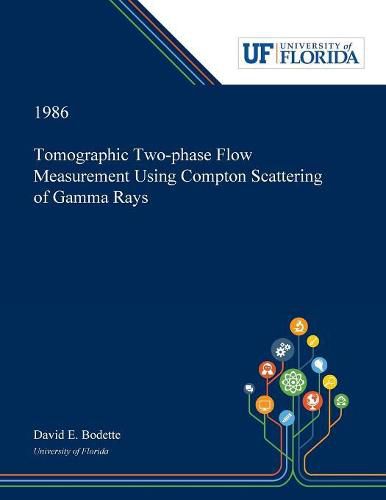Tomographic Two-phase Flow Measurement Using Compton Scattering of Gamma Rays
David Bodette

Tomographic Two-phase Flow Measurement Using Compton Scattering of Gamma Rays
David Bodette
Abstract: Using Compton scattered gamma-rays to measure local void fraction was first suggested by Kondic and Hahn in 1970. The Compton scattered gamma-ray densitometers they suggested employ a single, narrow beam source and either a well collimated detector or an uncollimated detector. The collimated detector configuration only gives the local void fraction measurement in the small volume where the source and detector collimators intersect. The uncollimated detector configuration is a more efficient design since the local void fraction along the source beam’s path is measured in a single reading. A logical extension of the technique is to use wide beam illumination and uncollimated detectors to sample an even greater portion of the flow cross section. This report investigates and demonstrates several methods of inferring two-phase flow parameters using wide beam illumination coupled with two detectors placed symmetrically about he source and pipe. The spatial distribution of the fluid in a slice of the pipe is encoded with respect to energy in the singly scatter photon flux. Two basic techniques are detailed for decoding the spatial information: the method of spectral moments and the method of computed tomography (CT). Examination of the low-order moments of the singly scattered photon spectra from the two detectors provides sufficient information for flow regime identification. Flow asymmetries are revealed by comparison of the spectral moments of the two measured spectra. Further classification of the flow pattern is made on the basis of the first and second moments of the spectra. The real focus of this report is the adaptation and successful demonstration of CT techniques with Compton scattering. Three series expansion techniques are considered: the algebraic reconstruction technique (ART), the simultaneous iterative reconstruction technique (SIRT), and the iterative least squares (ILS) technique. Application of the modified ART, SIRT, and ILS algorithms to a hot-spot and a cold-spot reconstruction problem indicates that SIRT and ILS are more accurate than ART. A more extensive testing of the ILS algorithm for a variety of model flow regimes demonstrates the potential of Compton scatter tomography as a quantitative measurement technique.
Dissertation Discovery Company and University of Florida are dedicated to making scholarly works more discoverable and accessible throughout the world. This dissertation, Tomographic Two-phase Flow Measurement Using Compton Scattering of Gamma Rays by David E. Bodette, was obtained from University of Florida and is being sold with permission from the author. A digital copy of this work may also be found in the university’s institutional repository, IR@UF. The content of this dissertation has not been altered in any way. We have altered the formatting in order to facilitate the ease of printing and reading of the dissertation.
This item is not currently in-stock. It can be ordered online and is expected to ship in approx 2 weeks
Our stock data is updated periodically, and availability may change throughout the day for in-demand items. Please call the relevant shop for the most current stock information. Prices are subject to change without notice.
Sign in or become a Readings Member to add this title to a wishlist.

